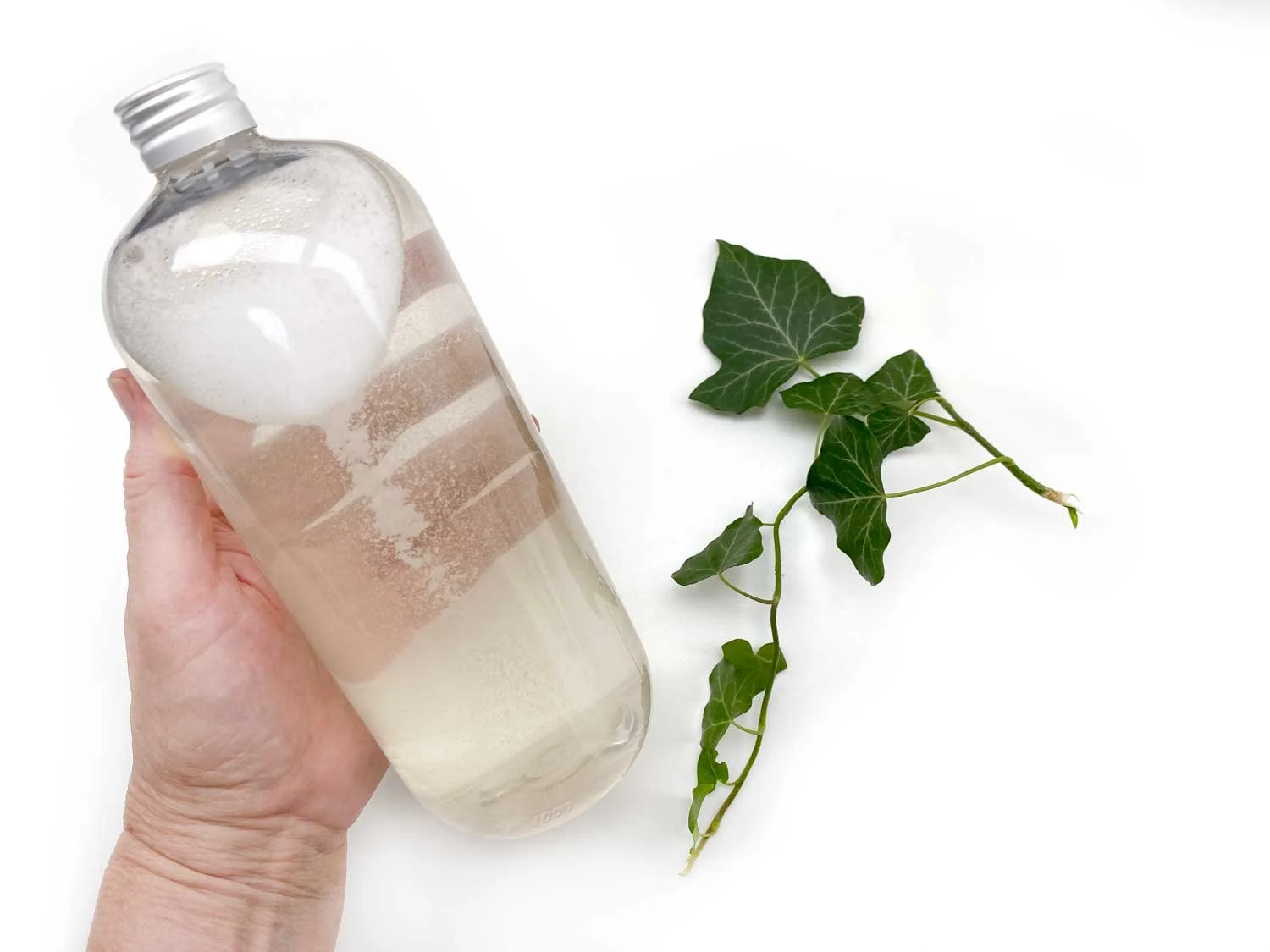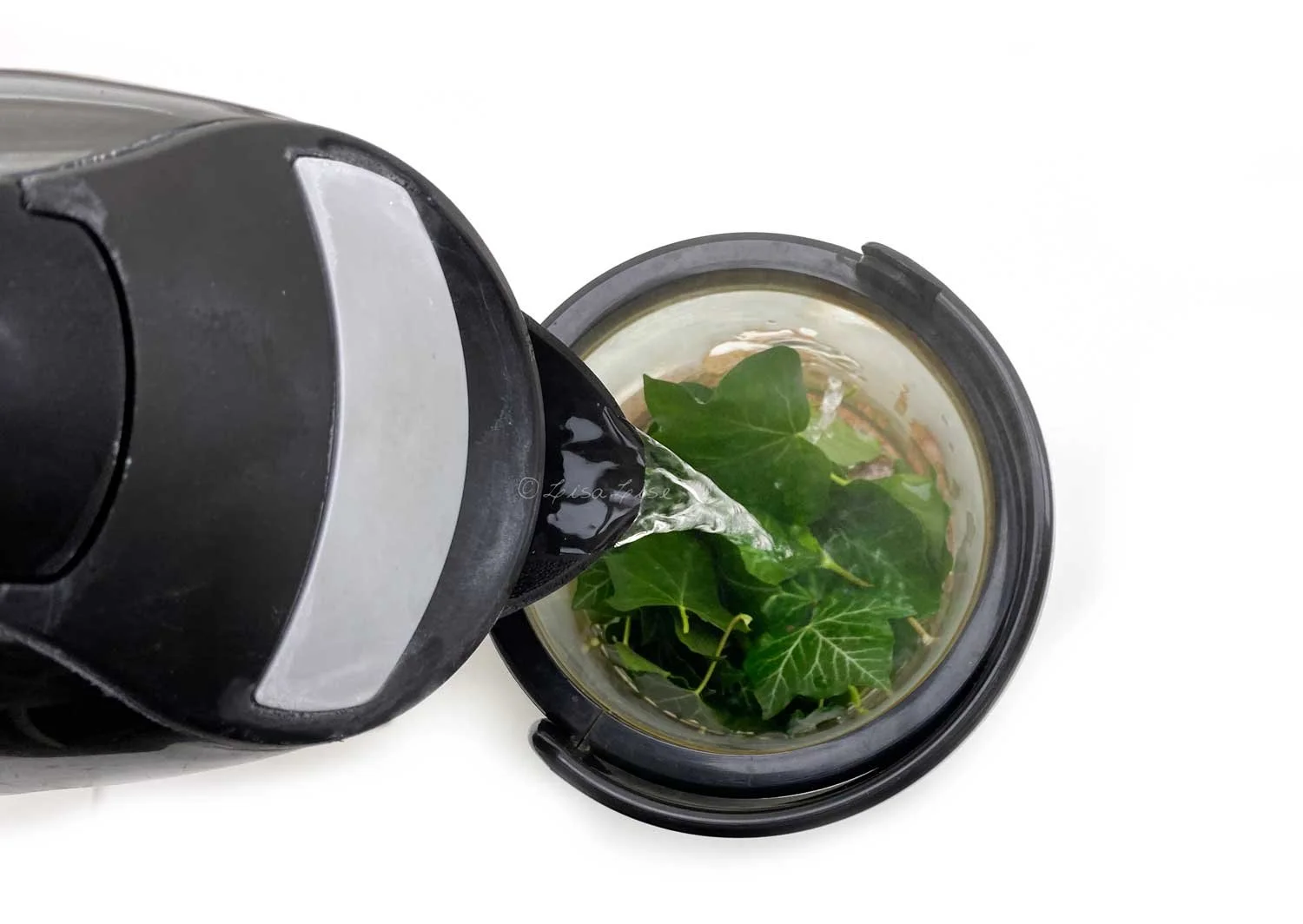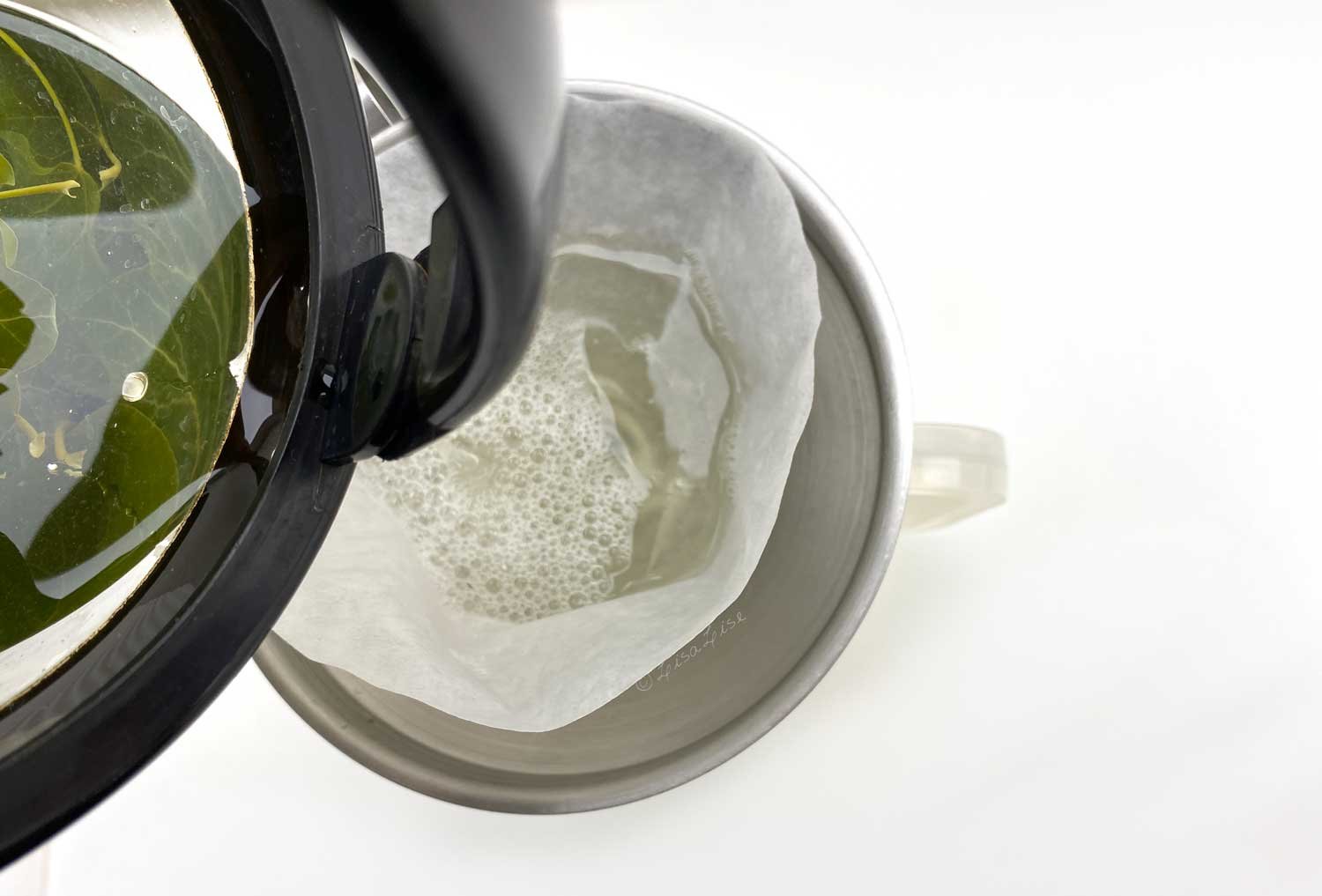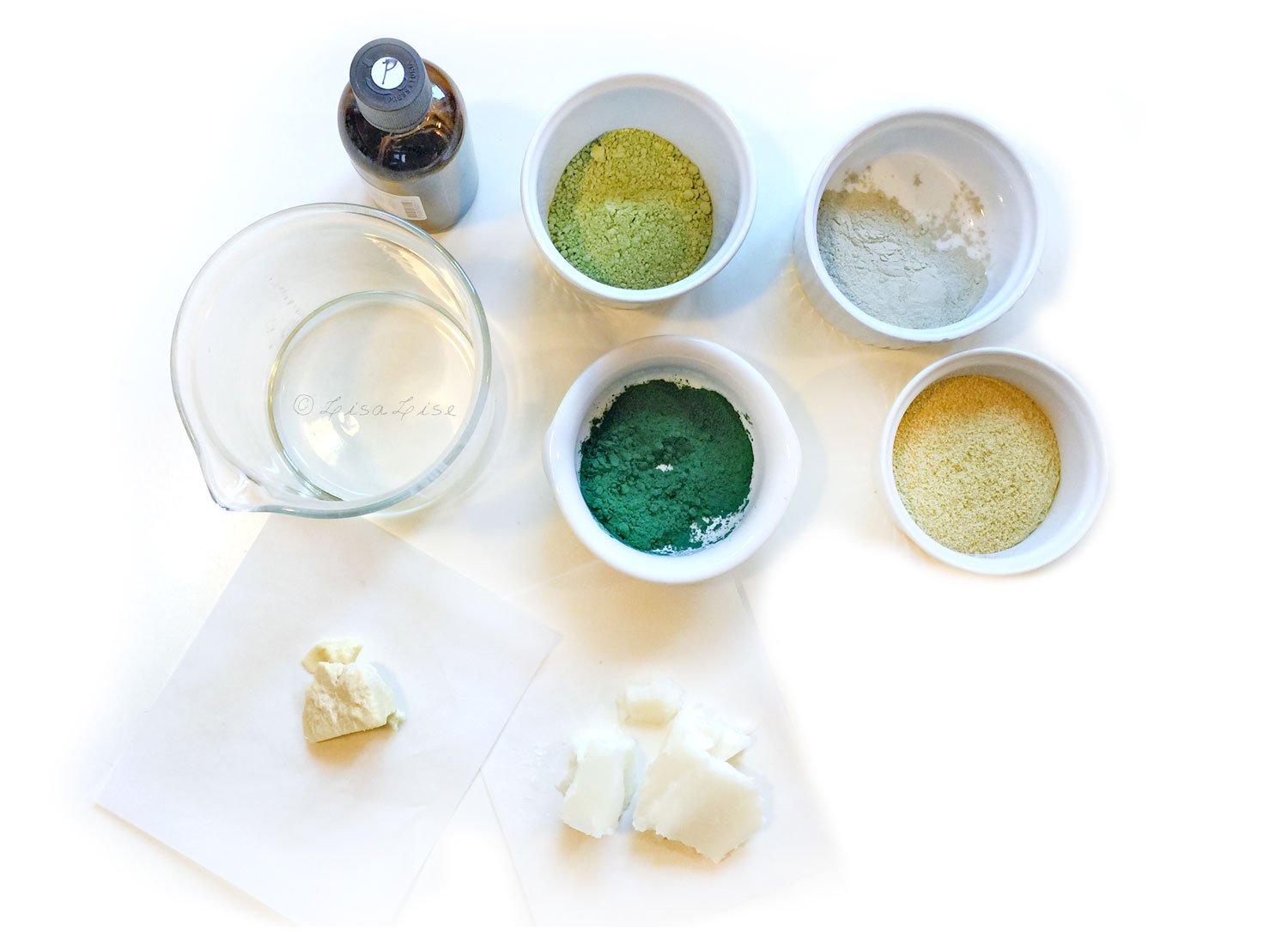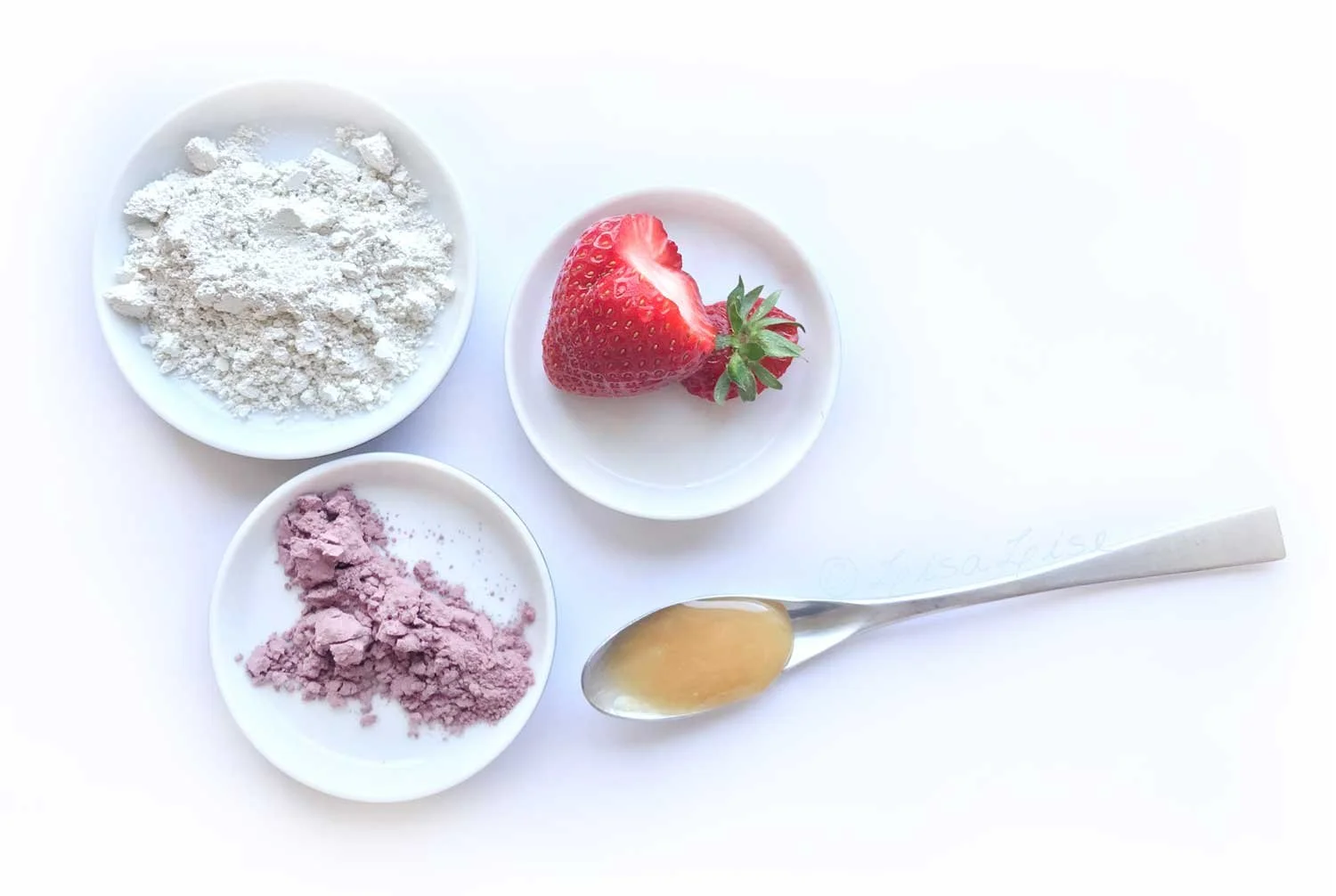How to Make an Ivy Leaf Hair Cleanser
Lise
Pictured above: an all natural sudsy liquid that will cleanse your hair and scalp beautifully.
You've probably seen this plant many times and in many places: parks, gardens, fields, forests, and urban areas.
I seem to remember hearing it referred to as 'the architects comfort' somewhere. Perhaps this is because it seems to grow just about anywhere (like, up brick walls) and adds a touch of green and a cozy atmosphere wherever it grows.
While it is both decorative and hardy, Hedera helix - otherwise known as Common ivy – is also a very useful plant for cleansing due to its natural content of saponins. (The word saponin comes from Latin: sapo means soap).
Ivy leaves can be transformed into an all natural cleanser for numerous things: dishes, laundry, and even your scalp and hair.
There is a slight difference in the method for making laundry and dishwashing liquid (which is more concentrated) as compared to a scalp and hair cleanser.
Today, I'm going to show you how to make your own hair and scalp cleanser with nothing more than a few freshly picked ivy leaves and some water.
Did someone say sustainable, planet-friendly effective hair and scalp magic?
Ivy Leaf Picking Tips
Select leaves that are growing up (and not along the ground)
Select healthy looking leaves
If you are picking leaves from someone’s garden, remember to ask first
Bring a small scissors to cut the leaves instead of tearing them off
Batch Size
I usually make a liter at a time (to last about a week), but feel free to make a smaller batch (which will also allow you to leave out the preservative and use regular tap water instead of distilled water)
For a 1 liter batch, you'll need:
Handful of fresh-picked ivy leaves (enough to fill about a third of a container that holds 1 liter)
Demineralised water
Broad spectrum preservative
For a use-the-same-day batch, you'll need
Small handful of ivy leaves (enough to fill about half of a container that holds 200 ml / 16,7 fl oz)
Tap water
Method
Inspect leaves and discard any unhealthy looking specimens.
Place leaves in container (do not pack them tightly, just drop the whole leaves into the container)
Boil water
Pour freshly boiled water over leaves
Cover container and allow to steep until the liquid reaches room temperature
Strain (and use same day if you made a single use portion). Otherwise continue with the next 6 steps below.
If you are making 1 liter:
Weigh the strained liquid
Weigh out appropriate amount of preservative and add to liquid.
Stir to thoroughly incorporate
Check pH (this infusion measured pH 6.0)
Adjust pH if necessary (I generally add a splash of herb-infused vinegar to function both as pH adjuster and hair-shine booster)
Bottle
I used phenonip as the preservative for this 1 liter batch.
How To Use the Ivy Leaf Hair Cleanser
Enter shower
Wet hair
Apply about 100 ml of liquid (for short fine hair -- you may need more if your hair is longer/thicker)
Massage scalp and hair lightly (as you would if you were using a shampoo).
Allow the liquid to sit in hair for about 4-5 minutes (while you finish showering)
Rinse hair
Do a 'squeak test' on your hair. If it doesn't feel clean enough, repeat steps 2 and 3.
Dry and set as usual
No Lather I Gather?
We’ve been taught for generations to equate lather with cleansing, but it is possible to cleanse thoroughly and completely without any lather or sudsing action.
This cleanser may foam up beautifully when you shake the bottle, but it goes on like water and rinses off like water.
Doing a squeak test will reveal that it really cleanses your hair. I’ve experimented a bit with how much it can handle, and can attest that this latherless cleanser even removes my pre-poo hair oil treatment with a mere 2 applications. The secret to optimal cleansing action is letting the liquid sit on the scalp for about 4-5 minutes after massaging and before rinsing off.
Enjoy!
Do Tell
If you decide to give this cleanser a try, I’d love to hear your feedback!
Find More Information
About Saponin Synthesis and Function (LINK)
Saponins and flavonoids in Ivy Leaf extracts (LINK)
Saponin content of ivy leaves (LINK)
Triterpenoid biosynthesis and engineering in plants (LINK)
If you prefer lather in your hair cleanser, then maybe the book below is for you.

